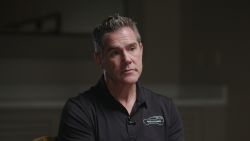The US economy added only 75,000 jobs in May, a surprisingly low number that was well below what experts had predicted.
The unemployment rate remained at 3.6%, however, meaning that joblessness is still hovering near a half-century low.
The report supports suspicions that the labor market is finally slowing down from its blistering pace in 2018, with revisions to the past two months subtracting 75,000 jobs. Employers have added 164,000 jobs per month on average in 2019, compared with 223,000 jobs per month last year.
International trade tensions are fueling concerns that the high-flying economy may be in for a fall. President Donald Trump’s threat to impose tariffs on Mexico following additional tariffs on China, could send the global economy toward a recession, some economists warn. Those jitters could explain why hiring has been volatile over the last several months.
“That could be a sign of going through some kind of transition here,” said Josh Wright, chief economist at the recruiting software company iCIMS. “We’re dancing on the edge of the wall, and there’s only so long you can dancer before you tip over.”
Economists had expected 185,000 jobs added in May, with some citing the hiring of potentially tens of thousands of workers for the decennial Census. Historically, the Census Bureau has staffed up in early summer, but the federal government (excluding the Postal Service) only added 1,400 jobs.
The labor force participation rate remained the same and the share of people who can’t find enough hours or stopped looking for work decreased to 7.1%, nearing the lowest level on record, 6.8% in October 2000. That could be evidence that employers are converting part-time staff to full time, as the economy nears full employment after 104 months of continuous job creation.
However, wage growth also decelerated slightly, with average hourly earnings rising 3.1% from a year earlier, down from a 3.2% rate in April. A lack of wage pressure indicates that employers aren’t as desperate for workers as they often say they are.
Health care and professional and business services were singular bright spots in the report, and have added nearly 900,000 jobs over the past year between them.
But construction, mining and manufacturing showed little change from April. Manufacturing has been particularly weak over the past several months, and the goods-producing side of the economy has declined steadily since the middle of 2018, while the larger service sector continues to add jobs.
The weak report set off a fury of speculation among Wall Street analysts over whether the Federal Reserve will cut interest rates at one of its upcoming meetings to keep the economy on an even keel.
“We still think Fed officials will want to see evidence of more sustained weakness before taking action,” wrote Capital Economics senior US economist Andrew Hunter in a note to clients. “But we are increasingly convinced that the Fed will begin cutting interest rates later this year.”

























